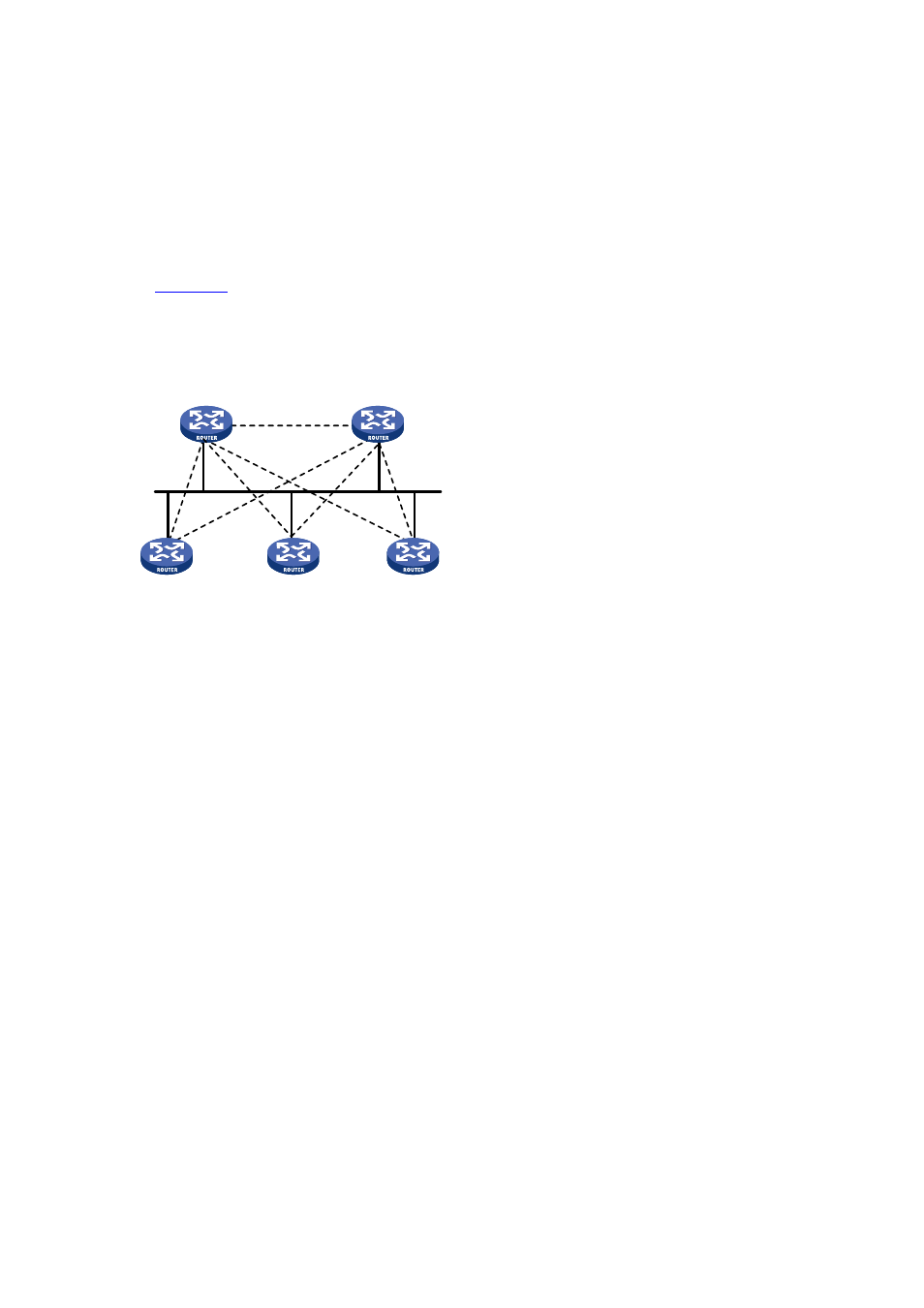Dr/bdr election – H3C Technologies H3C S3600 Series Switches User Manual
Page 337

4-10
exchanged between them. Once the DR becomes invalid, the BDR becomes a DR. Since no re-election
is needed and the adjacencies already exist, the switchover process is very short. Now, a new BDR
should be elected. Although this election process will also take quite a long time, route calculation will
not be affected.
On an OSPF network, a router which is neither DR nor BDR is called DR Other. It establishes
adjacencies with the DR and BDR, but not with other DR Others. This reduces not only the number of
adjacencies among routers, but also the network traffic and occupied bandwidth resources on the
broadcast or NBMA network.
In
, the solid lines represent physical Ethernet connections and the dotted lines represent
adjacencies established. The figure shows that, with the DR/BDR mechanism adopted, seven
adjacencies suffice among the five routers.
Figure 4-7 DR/BDR
DR
BDR
DRother
DRother
DRother
DR/BDR election
The DR and BDR in a network are elected by all routers rather than configured manually. The DR
priority of an interface determines its qualification for DR/BDR election. Interfaces attached to the
network and having priorities higher than ‘0” are election candidates.
The election votes are hello packets. Each router sends the DR elected by itself in a hello packet to all
the other routers. If two routers on the network declare themselves as the DR, the router with the higher
DR priority wins. If DR priorities are the same, the router with the higher Router ID wins. In addition, a
router with the priority 0 cannot become the DR/BDR.
Note the following points:
z
DR election is required for broadcast or NBMA interfaces but is not required for P2P or P2MP
interfaces.
z
DR is based on the router interfaces in a certain segment. A router may be a DR on an interface
and a BDR or DR Other on another interface.
z
The priority of a router affects the DR and BDR election. However, it has no effect on the election
after the DR and BDR election ends. A new priority assigned to the router takes effect at the time of
next DR and BDR election.
z
If a new router is added after DR and BDR election, the router does not become the DR
immediately even if it has the highest DR priority.
z
The DR on a network segment is unnecessarily the router with the highest priority. Likewise, the
BDR is unnecessarily the router with the second highest priority.
